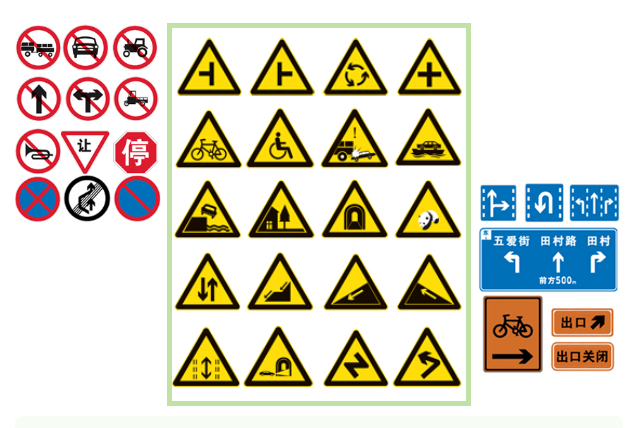What Are the Key Functions of Different Signage Types?
Signage is the silent communicator of the modern world. In a single glance, it conveys essential information, guides us through unfamiliar spaces, and shapes our perceptions. From road signs directing our path to business signs promoting brands, the power of effective signage is undeniable.

Different Sign Shapes
Triangle:
Triangles, known for their stability, are primarily used for safety warnings. They are commonly seen in tunnels, villages, and on roads, alerting drivers to road conditions, safety, and geographical location.
Circle:
Circles, with their inclusive shape, are often used for prohibition signs. They are found on public transportation vehicles, in factories, and outdoor areas, indicating restricted areas and prohibited actions.
Rectangle:
Rectangles allow for more content, including tourism signs, directional signs, and informational signs. They usually consist of text and symbols, providing directions and conveying information.
Different Color Combinations
Road traffic signs often use colors like red, yellow, green, blue, and black. The choice of color is essential to convey specific concepts.
Red:
Red is a color associated with danger and warnings. It is used for background colors, borders, and diagonal stripes in signs, emphasizing prohibitions and safety alerts.
Yellow:
Yellow is bright, energetic, and highly reflective. It is often combined with black and used in triangle warning signs to enhance their visibility.
Green:
Green is a fresh, bright color used in highway information signs to provide drivers with direction and location information.
Blue:
Blue is calm and often paired with white. It is used for temporary and everyday road signs, indicating pedestrian positions and directions.
Common Issues
Signage Falling Off:
Traffic signs are typically made by gluing reflective films onto aluminum sheets. Inadequate adhesive strength can lead to signs falling off, posing safety risks.
Faded or Blurry Text:
Prolonged exposure to sunlight and harsh weather can cause the surface of reflective films to become blurry, diminishing their warning or informational effects.
Diminished Brightness:
Different colors have varying reflective effects, with lower brightness affecting nighttime visibility. Low-brightness signs are challenging to discern in poorly lit areas like tunnels or intersections.
Selecting High-Quality Reflective Films
The primary function of road signs is nighttime visibility. However, many signs suffer from issues like missing, fading, and damage. Therefore, choosing high-quality products can effectively protect the value of signs.
Benefits of Super-Grade Reflective Films
Versatility: Suitable for various applications.
Excellent Nighttime Visibility: Strong reflection with a coefficient >250°, offering outstanding reflective effects at different angles.
Strong Adhesion: High-strength pressure-sensitive adhesive, surface protection coating, and strong bond with substrates.
Weather Resistance: Weather-tested for 1-3 years, maintaining excellent retroreflective performance even in adverse conditions.
By conveying different meanings through various shapes and colors, choosing high-quality reflective films can extend their lifespan, ensuring convenience and safety during travel.

